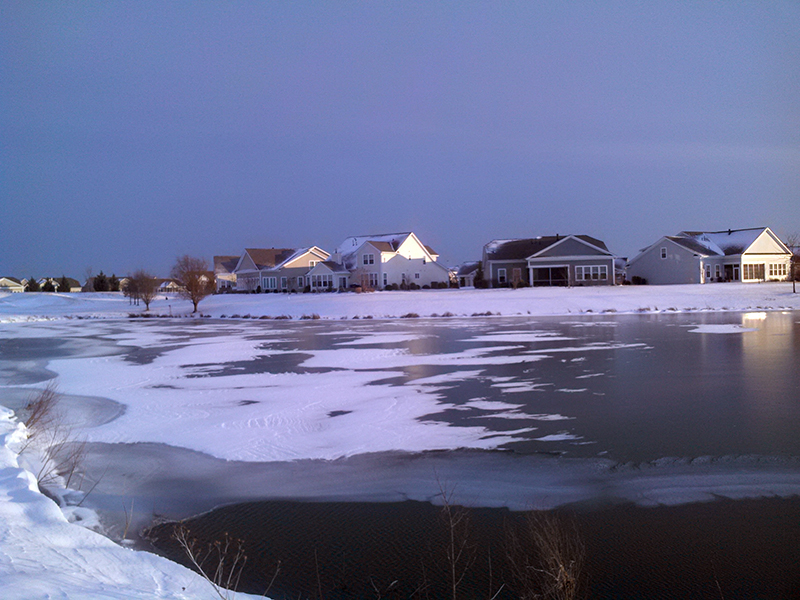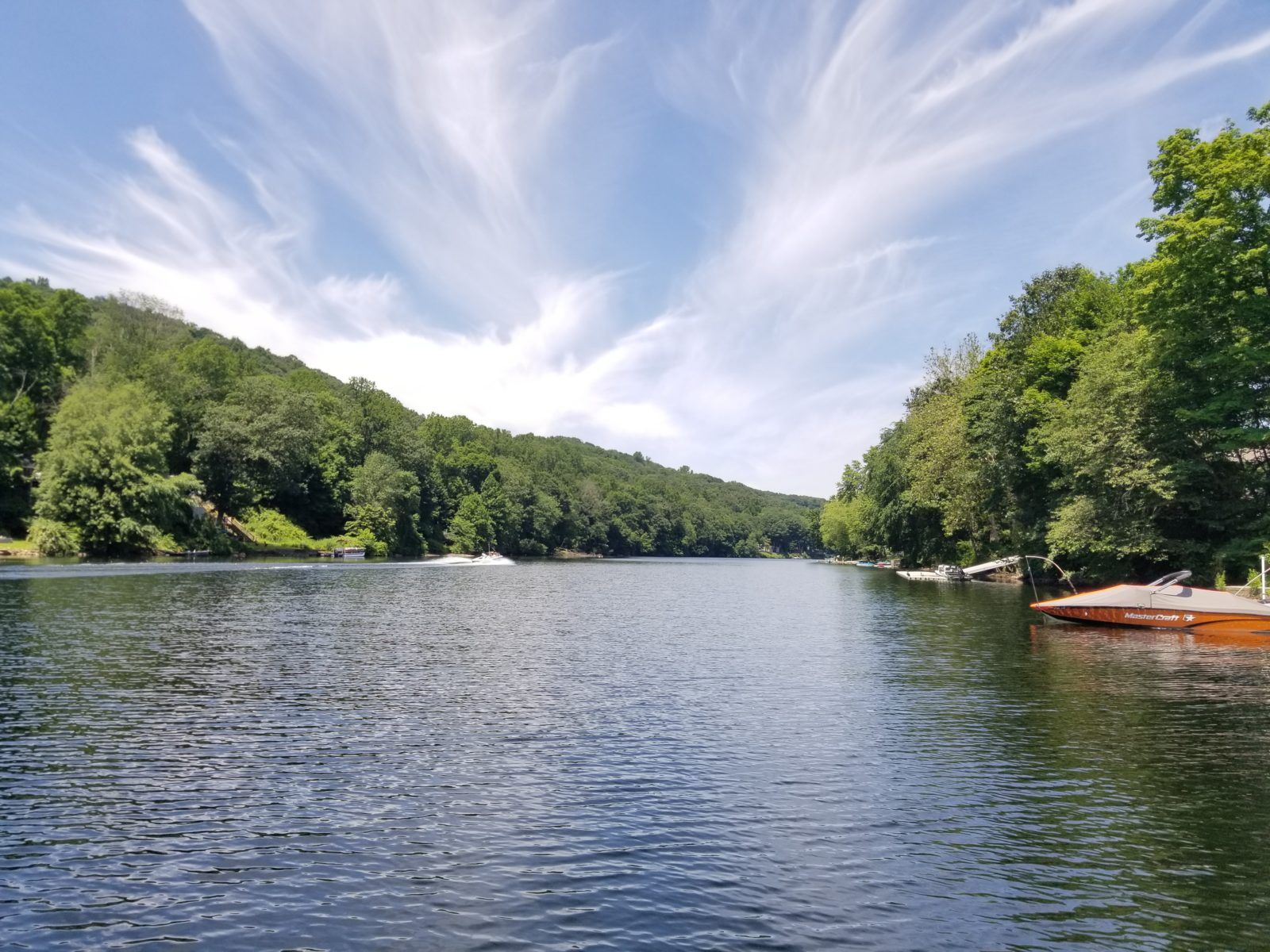Winter Road Salt and Aquatic Environments
February 27th, 2014
Like many other people in the Northeast and Mid-Atlantic States, I washed off the winter grime from my truck for what seems like the 20th time this year. After a brief taste of spring, the snow has returned, and with it, the road salt. This historically cold winter has seen road salt usage spike to the highest levels seen in years. Even many southern states have not been spared from the winter weather. We all know, road salt is necessary to make driving conditions safer, but these road treatments can effect lakes, ponds, and other aquatic environments. While the snow might be gone later this spring, road salt will still be impacting many waterways.
The road salt that is used most often is Sodium Chloride. The common formulation is forty percent sodium (na+) and sixty percent chloride (cl-). The major issue is the chloride. It is extremely mobile and soluble. There are no natural processes by which chloride is taken up, metabolized or removed from the environment. This means chloride cannot even be treated by stormwater BMPs and remains in aquatic environments until it is flushed out of the system. It is toxic to aquatic life, plants, and some wildlife. Sodium is removed readily through ion exchange (it is positively charged), but this process can change soil chemistry leading to release of nutrients into aquatic systems that can be detrimental.

Road salts enter ponds, lakes, streams, and wetlands through run-off, snow melt, road spray, and wind. Water with road salt is denser. It sinks to the lower areas of waterbodies and can create stratification. This prevents normal pond turn-over, halting oxygen and nutrient exchange. This can exacerbate the anoxic dead-zone in the bottom of ponds and lakes, making it unusable for aquatic life.
Again, chloride is the major concern for aquatic life. It can impact fish, macroinvertebrates, insects, and amphibians. Elevated chloride levels can disrupt aquatic food webs by eliminating food sources. Chloride also affects survival, growth, and reproduction rates. Sodium can increase salinity levels. This can reduce bio-diversity by selecting for more salt tolerant aquatic plants and animals. Salt can also enter the sediment at the bottom of waterbodies, causing the release of toxic metals that can upset oxygen and nutrient exchange. There are additives and impurities in road salt, like metals and phosphorus that can also be detrimental to aquatic systems. The more impervious surfaces in a watershed, the more chloride, salt, and other materials in road salt reach surface waters.
I know you are thinking: if road salt is so horrible, why do we use so much of it? The major issue is cost. Safer alternatives are often much more expensive, and would be cost prohibitive to use. Other similarly priced road treatments have been found to be just as or more toxic than road salt. The impact of road salt is more acute in areas farther north and places that see more snow. Some states and areas of Canada have restricted or limited road salt usage in environmentally sensitive areas associated with aquatic environments that are important for pond fish, wildlife, and human usage.
While cost is an issue for large scale applications, you can use safer alternatives such as sand, wood ashes, and kitty litter to reduce slipping risk. To melt snow and ice, you can use Potassium Acetate or Calcium Magnesium Acetate, which are less toxic and much more environmentally friendly.
It is snowing again this week here in the Mid-Atlantic. I think most of us have had enough of Old Man Winter. And let’s all hope we have a wet spring and summer to help dilute and flush the chloride and salt from our waterways.
Find Your Water Quality Solution
SOLitude Lake Management is committed to providing full-service lake, pond and fisheries management services that improve water quality, preserve natural resources, and reduce our environmental footprint. Learn more at www.solitudelakemanagement.com.










